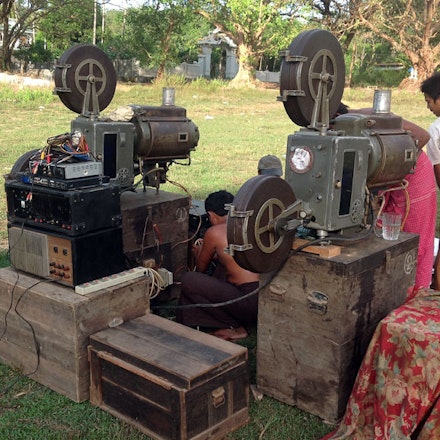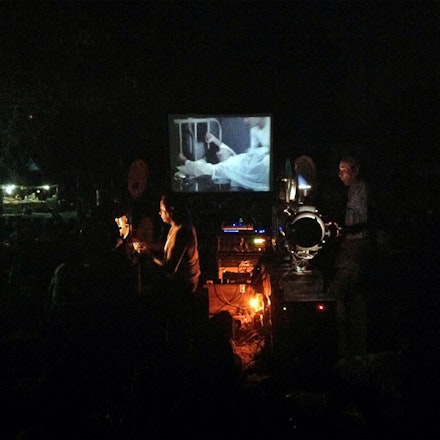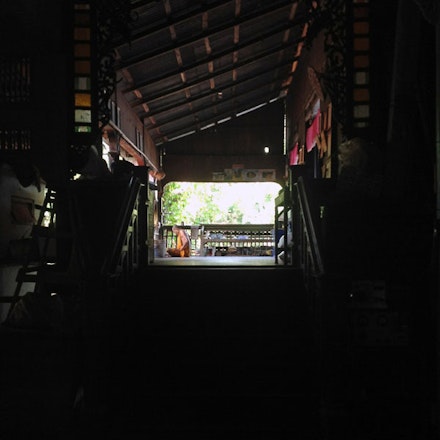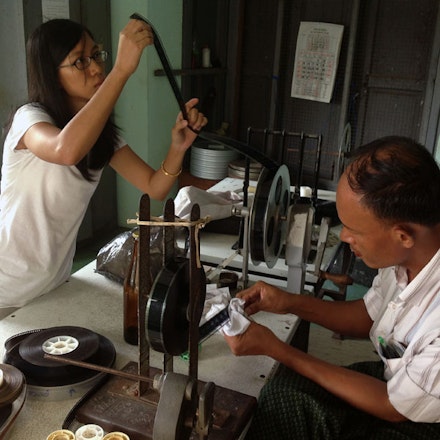TUN WIN AUNG and WAH NU are an artist couple based in Yangon, Myanmar. Both work in a range of media, including painting, photography, installation, and video. Tun Win Aung’s multimedia installations and site-specific works that comment on local histories and environments have frequently appeared in the art scene. Wah Nu’s work is very often inspired by her interest in psychological states. While working individually, the artist couple also dialogues with and responds to each other’s work by collaborating on large-scale art projects and activities.
What new or old tools are you
attached to in your art practice?


Research is central to our art practice to a significant extent. Process and repeated reflections are also primary components. Interdependence is crucial for us as we benefit a lot from discussing and offering suggestions to each other. Let’s say this is the old way, or rather the old tool, that is still useful and rewarding for us. This is also the old way of Myanmar people. From time to time, an inspiration or an imaginative thought occurs to us; that inspiration or imaginative thought may have come out of our artistry or out of our individual preoccupations. Between us we talk about it and sometimes arrive at an agreement to take it further by collecting together more data, information, and materials related to that specific subject. What we collect could include words, maps, drawings, images, and pieces of sounds or movements. During the process of accumulating these, we look at them closely and make analyses too. Under the right circumstances, the progress of the work will slowly materialize. Repeatedly reflecting every step we take is as important as the original idea. These repeated reflections and suggestions we make to each other will finally bring about the decision as to which medium suits our original idea best.

What tools have you rejected?

We don’t want any form of competitiveness between us. That’s the most important thing. Competitiveness can damage our collaborative effort. We are also aware that one must not be too self-important to think his work will impress people. We try not to do that because if we do, we can lose our reality and ourselves. We don’t like artworks that are too dramatic and too illustrative. To us, such artworks are too universal and too boring. We also avoid depending so much on objects that seemingly have innate aesthetic qualities; to us, such objects lack spiritual/psychological depth. We don’t like to depend so much on technology either. Some technologies are way beyond us and some are just too ostentatious, like circuses. Some, we think, have nothing to offer apart from surprises. There’s one more thing we want to stay away from: performance. It’s for a very personal reason.
What have the tools
done to your art?
As we have mentioned before, we do care about discussing and offering suggestions to each other, and most of our artworks are research-based and the result of repeated reflections on every step of the process.
Ideally, something that starts with video sketching should lead to a video work or some kind of video-related work. But in reality, it may not be that simple. Oftentimes, one of us could help complete a sentence that the other has started. However, when we try to envision the final artwork based on an idea, we hardly have the same image in our minds. It’s impossible for us to prove that art as an idea. We have to leave it to our process—which involves brainstorming, repeated reflections, and sharing information and suggestions with each other—to decide what kind of work we would end up with. The end result might be a site-specific work, a video clip, a photograph, a miniature, or a soft sculpture. The process decides that. Repeated reflections and analyses inform us what we should do rather than what we want to do. Our extensive discussions guide us to specific ways appropriate for specific ideas. We come to the final decision by taking each other’s suggestions into account.
During the process, there is another situation that may further influence the transformation from the original idea to the end result. Whatever process we choose to go on with, “unexpected challenges” await us; we have no idea where and how they will reveal themselves. However carefully and precisely we have visualized and calculated the result, there are always uncertainties. Because of unforeseeable challenges, the project is always alive and evolving, which calls to mind a saying, “change is the only thing that is permanent.” We can compare this to the journey of a traveller. A traveller knows what his destination is. He also has all the information he needs to get there. In fact, he has prepared everything for this journey. Then he sets out on the journey, and he may actually get there. But, he never knows definitely what he might experience until he has experienced it.
Sometimes, our artworks look very different from what we have formerly visualized. On the other hand, final products are the remaining evidence of how our physical, psychological, and operational tools have influenced the process. They also embody how they are shaped by the way we respond to unexpected challenges we encounter during the process of making them. In sum, this is what our tools have done to the relationship between idea and form in our art.